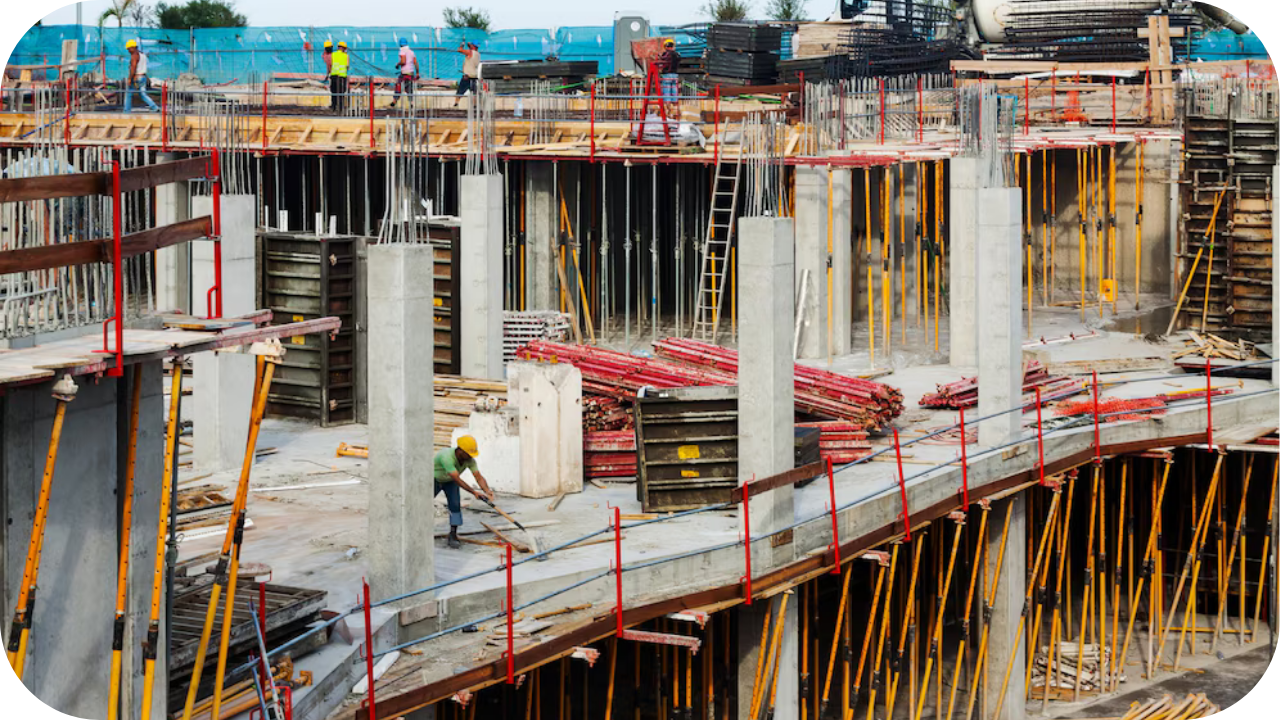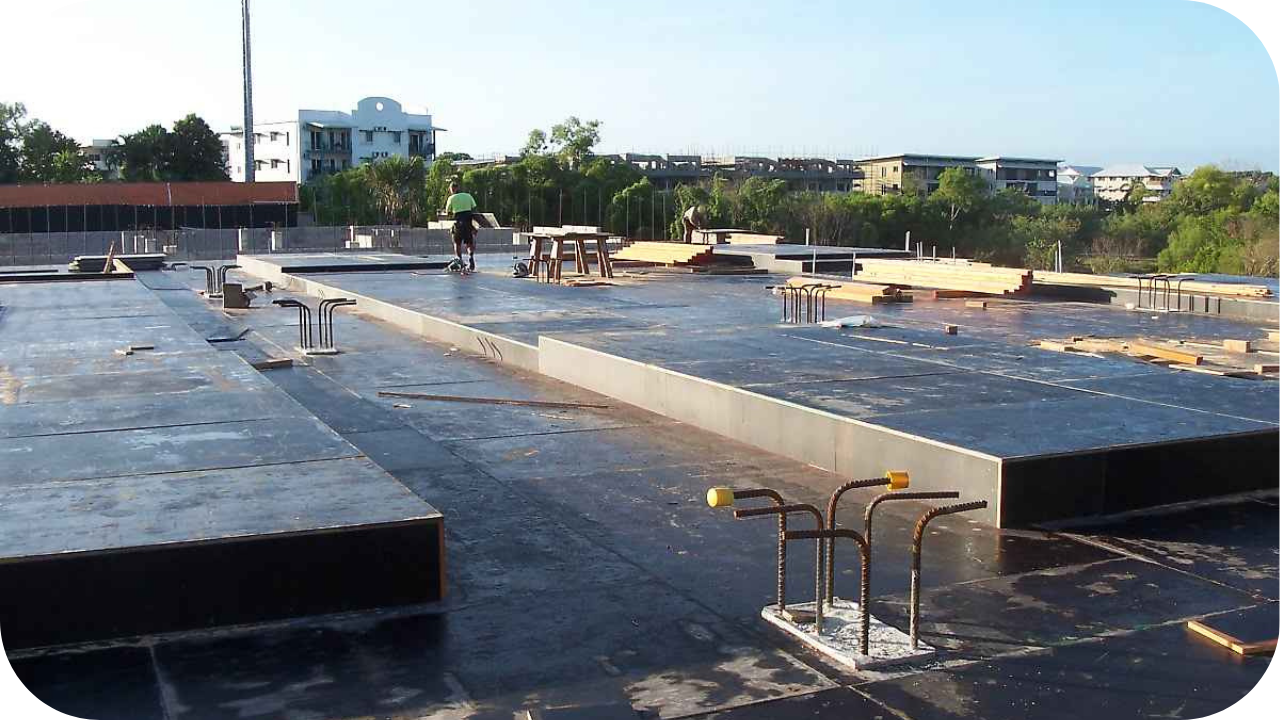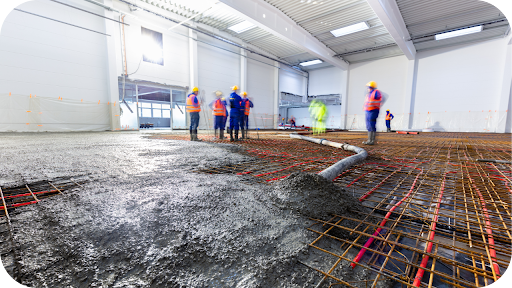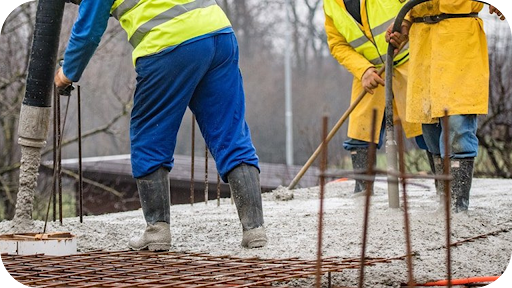


Choosing the right thickness for a concrete slab is not just about strength; it's about ensuring your project stands the test of time. Whether you are pouring a patio, a driveway, or a house foundation, getting the thickness right can make or break the final result.
Go too thin, and you risk cracking and costly repairs. Go too thick, and you could end up spending more than you need. Let us walk you through what to expect when planning your slab.

For most residential projects across Australia, the typical thickness of a concrete slab ranges from 100 mm to 150 mm. This range is typically sufficient to provide the strength and durability required for homes, patios, garden sheds, and small outdoor spaces. Choosing the right slab thickness from the outset will lay the foundation for a long-lasting, trouble-free build.
A standard house slab is typically poured at a thickness of 100mm, often reinforced with steel mesh to withstand everyday loads and prevent cracking. However, depending on soil conditions and the type of structure being built, contractors may recommend increasing the depth to 120mm or 150mm for added peace of mind.
Thicker slabs are commonly used in areas with poor soil or when additional load-bearing capacity is required.
Australian building standards, including AS 2870 for residential slabs and footings, set out minimum requirements for slab thickness, reinforcement, and design. These standards are designed to ensure your slab can withstand settlement, soil movement, and structural demands over time.
Cutting corners on thickness might save a few dollars up front, but it can lead to serious structural problems later on.
If you are building a home or adding a structure to your property, it is always worth speaking with a licensed concreter or builder to check that your slab meets both your needs and all relevant regulations.

When it comes to supporting heavy vehicles, driveways and garages need thicker, stronger concrete slabs. In most cases, a slab of at least 150mm thickness is recommended to handle the weight of regular cars, small trucks, and utility vehicles. For heavier vehicles or frequent traffic, even thicker slabs may be required.
Simply pouring a thicker slab is not enough on its own. As the expected load increases, so does the need for proper reinforcement. Steel mesh or rebar is essential to add tensile strength to the concrete, helping it resist cracking and movement over time.
In some cases, multiple layers of reinforcement or heavier gauge steel are used to meet the demands of commercial vehicles or high-traffic areas.
The sub-base preparation becomes even more critical for driveways and garages. A well-compacted base helps spread the load evenly and prevents the slab from settling or breaking under pressure. Poor ground preparation, even with a thick slab, can lead to premature failure.
If you are planning a driveway, garage floor, or any project involving vehicle loads, it is important to work with a concreter who understands the right thickness and reinforcement for your needs. Getting it right the first time will save you costly repairs down the track.

Choosing the right thickness is not a one-size-fits-all decision. Several important factors come into play when designing a concrete slab that will last. Paying attention to these details from the start can save you major repair costs, structural problems, and plenty of headaches down the track.
The ground beneath a slab is just as important as the concrete itself. Poor soil conditions, such as clay or loose fill, often require a thicker slab or additional reinforcement to prevent movement and cracking. Stable, well-compacted soil provides a stronger foundation and may allow for standard slab thickness without extra measures.
What the slab will support plays a major role in determining how thick it needs to be. A garden shed or patio will not need the same slab as a garage housing heavy vehicles. Projects expected to bear heavy or frequent loads will always demand thicker concrete and stronger reinforcement to maintain structural integrity over time.
Australian building codes set out minimum requirements for slab construction based on local conditions. In areas prone to ground movement, extreme heat, or heavy rainfall, thicker slabs and specific design standards are often required. Ignoring local regulations or climate factors can lead to slab failure, so it is important to design with these in mind from the beginning.
The level of care taken during site preparation significantly impacts how the slab performs in the long term. A poorly compacted or uneven base will stress the slab, regardless of thickness. Even a thick slab can crack or shift if the ground underneath is not properly prepared and compacted.
The way the slab is reinforced can sometimes reduce or influence the thickness needed. Strong reinforcement, like heavy-duty mesh or rebar, can allow for thinner slabs in some instances, provided it meets engineering requirements. A poorly reinforced slab, even if thick, can still fail under stress.

Getting the thickness of a concrete slab wrong is not just a small mistake. It can lead to major structural failures, expensive repairs, and safety hazards that could have been avoided with better planning. Here are some of the most common risks you need to know before starting your project.
Choosing the right thickness from the outset protects your investment and ensures your project stands strong for years to come.
Getting the slab thickness right from the beginning is one of the smartest moves you can make. Matching the slab to the demands of your project will save you money, time, and trouble in the long run.
Whether it is a simple patio or a heavy-duty driveway, there is no substitute for proper planning. A little extra care now means fewer headaches later. Need help choosing the right slab for your site? Book a consultation with our team today.

Choosing the right concrete contractor in Melbourne ensures strength, safety, and long-term value. Learn how Urban Pour delivers precision, quality, and trusted results on every project.
See more
Concrete pumping gives Melbourne builders faster, cleaner, and safer pours. Learn why it’s the go-to method for efficient, high-quality concrete placement on any site.
See more
Residential concreting gives Melbourne homes lasting strength and modern appeal. From driveways to interiors, Urban Pour delivers durable, design-focused results built for beauty and longevity.
See more